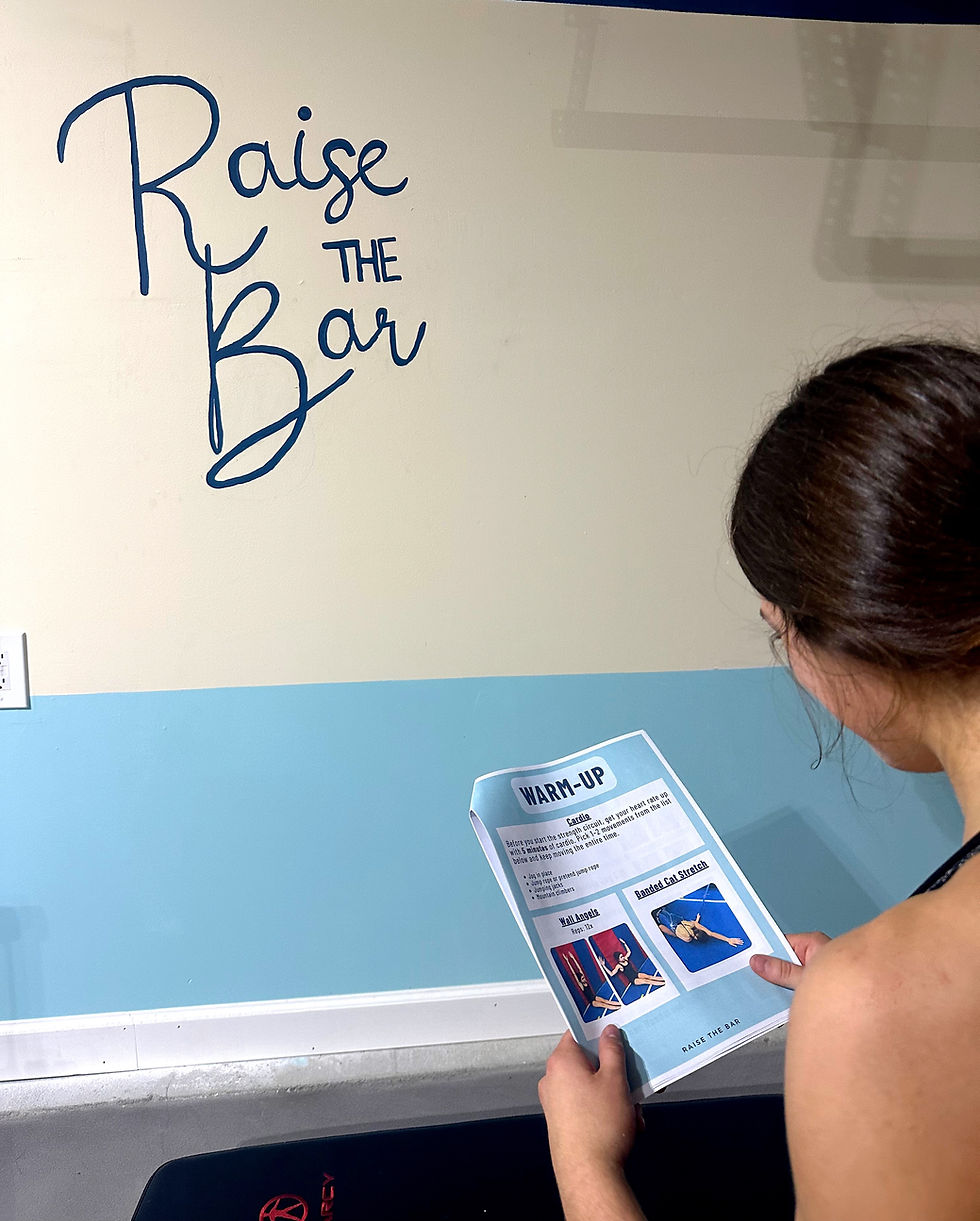When to Add Weight Training for Gymnasts: Progressing from Bodyweight to Weights
- raisethebargymnast

- Nov 2
- 2 min read
One of the most common questions I get as a coach is:“When should gymnasts move from bodyweight training to weight training?”
In gymnastics, shaping and bodyweight control form the foundation of strength. But there comes a time when progressing requires adding resistance beyond an athlete’s own body. The key is knowing when athletes are ready and how to add weights safely.
Start with Bodyweight and Shaping Foundations
Every gymnast begins with bodyweight strength: push-ups, rope climbs, planks, hollow holds, handstands, and leg lifts. These teach not just strength—but also control, alignment, and body awareness.
Before adding any external weight, gymnasts should demonstrate:
Consistent core stability in hollow and arch positions
The ability to hold proper alignment under fatigue
Sufficient repetition strength (e.g., 10–15 controlled push-ups, leg lifts, or chin-ups with good form)
If athletes don’t yet have these basics, adding weights too early will only magnify poor habits instead of improving strength.
When Gymnasts Are Ready to Add Weight Training
Adding resistance makes sense when bodyweight strength has plateaued or when athletes are physically mature enough for progressive overload.
Signs your gymnast is ready include:
Completing high reps of bodyweight exercises with ease
Maintaining excellent technique under fatigue
Needing more challenge to keep building power and endurance
Training at optional or elite levels where explosive strength is essential
Research consistently shows that with proper supervision, weight training is safe for young athletes and can even reduce injury risk by improving joint stability and muscular balance.
How to Transition into Weight Training for Gymnasts
The move from bodyweight to weights should be gradual and intentional. Think progression, not replacement:
1. Add resistance using familiar tools
Medicine balls, ankle weights, resistance bands, sliders
Example: hollow rocks with a light medicine ball or squats using bands
2. Introduce light external weights
Dumbbells, kettlebells, or weighted bars
Focus on known movements like squats, presses, or deadlifts—keeping shaping and alignment as the top priority
3. Progress to compound lifts under supervision
Once gymnasts show consistent form, progress to barbell lifts with close coach oversight
Prioritize form, range of motion, and control over how heavy the load is
Keep the Gymnastics Focus
Weight training should complement, not replace, gymnastics conditioning. The goal is to enhance strength, power, and injury resistance—not bulk.
Always emphasize shaping, body control, and core stability. These are the qualities that make strength training translate directly into better gymnastics performance.
Final Thoughts
Bodyweight exercises and shaping are the bedrock of gymnastics strength. But as gymnasts advance, carefully introducing weight training can unlock new levels of power, resilience, and performance.
Start with strong basics, add resistance gradually, and always prioritize form over numbers. When done right, weights become another powerful tool to help gymnasts reach their full potential.

Comments